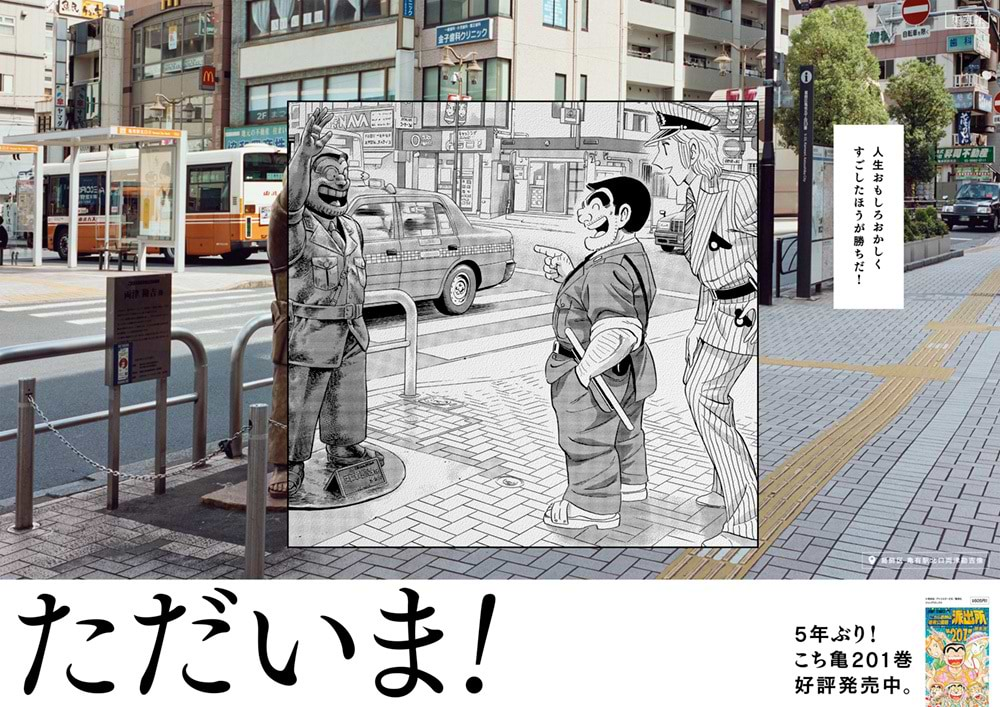
Out-of-home (OOH) is a catch-all term for advertising media that consumers experience at places outside of their homes. The media includes transit advertising, outdoor advertising, and advertising at commercial facilities.
To examine the benefits of this form of advertising in greater depth, two members of Dentsu’s Out of Home Media Services Division—Daiki Kurokawa and Kana Misawa—interviewed Dentsu planner and creative director Noriaki Onoe, who has handled many OOH projects.
For Onoe, OOH advertising is much like a recommendation engine; it suggests and introduces products and services to people moving around outdoors. Drawing from examples of creative projects he has worked on, Onoe talked about the benefits of OOH media compared with other forms of advertising media.
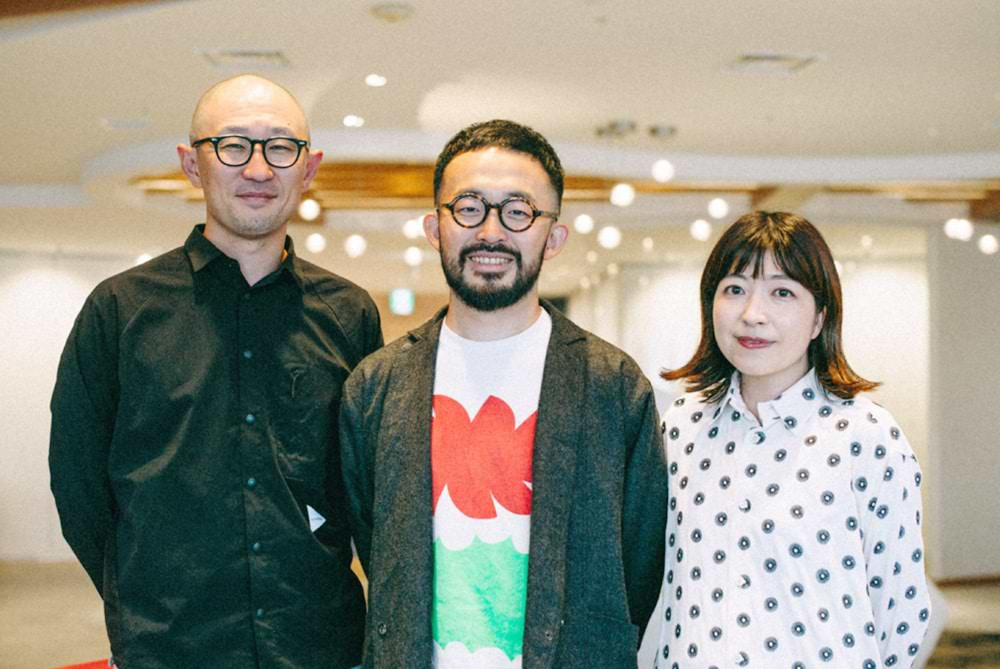
Driving advertising campaigns
Kana Misawa: I would like to begin by asking you about the outdoor advertising project to promote Sanctuary, the sumo wrestling drama series that became available on Netflix in May 2023. How did that project come about?
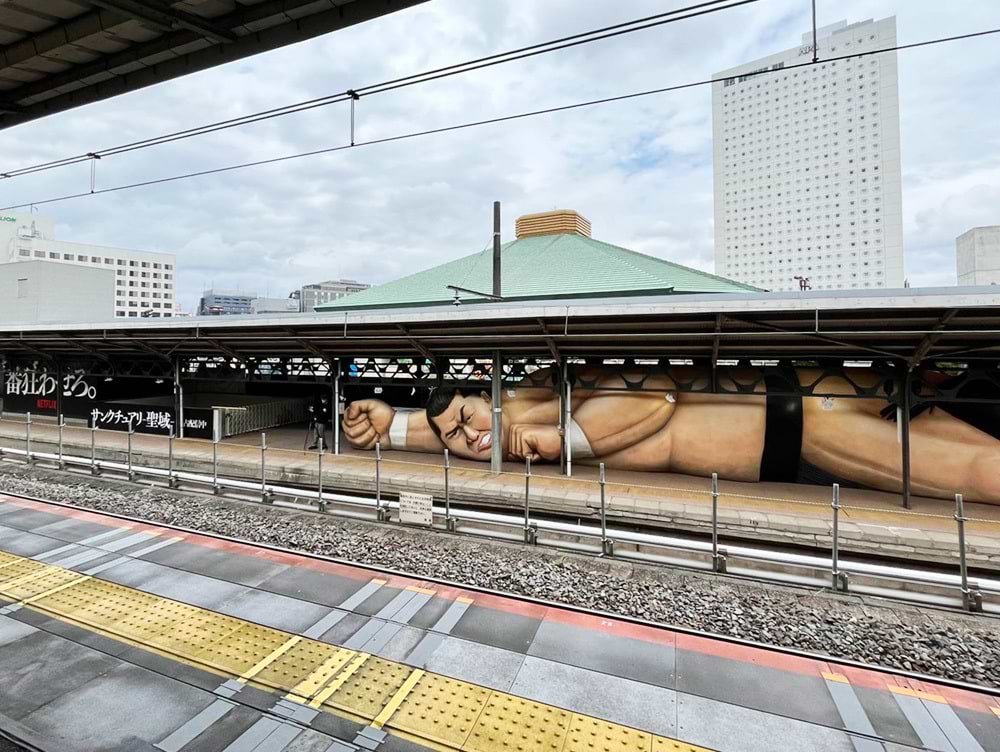
Noriaki Onoe: In the past, when planning a campaign we would regard the official homepage as the primary advertising medium. The campaign would be designed to attract visitors to the homepage and other campaign-related web pages. They were the main means by which users could learn about the campaign quickly and read the ad slogans.
Since around 2014, however, it has become more difficult to get people to look closely at homepages, because a growing amount of social media content has been providing such key information. Moreover, these days people want everything to be conveyed at a glance whenever possible, with no need for even a click or a tap.
For that reason, we began to envision newspaper and OOH ads as the face of the campaigns. Photographs of outdoor ads, in particular, can be posted and shared on social networking sites where, like thumbnails, they can provide a concise summary of a campaign. By capturing celebrities and ad slogans, photographs are very important for attracting attention to places featured in a campaign.
For the Sanctuary campaign, instead of installing outdoor ads in Tokyo’s Ryogoku district, the homebase of sumo wrestling in Japan, some people suggested the city’s lively Shibuya district because the impact would be bigger from the perspective of circulation (data indicating media penetration). In my view, however, that would have lacked punch. The grand sumo tournament was being held in Ryogoku right then, in May, when the Netflix series debuted, so I thought it was right to do the campaign there. After considering various proposals that could have a big impact without being too difficult to produce, we decided to install a huge image of Enoh, the main character of the drama, in Ryogoku.
Misawa: Places like Shibuya and Shinjuku tend to draw so much attention in Japan, but this campaign provided an excellent example of how an outdoor ad can make a place really topical. While checking social media posts, we found that many people went to Ryogoku to see the ad installation.
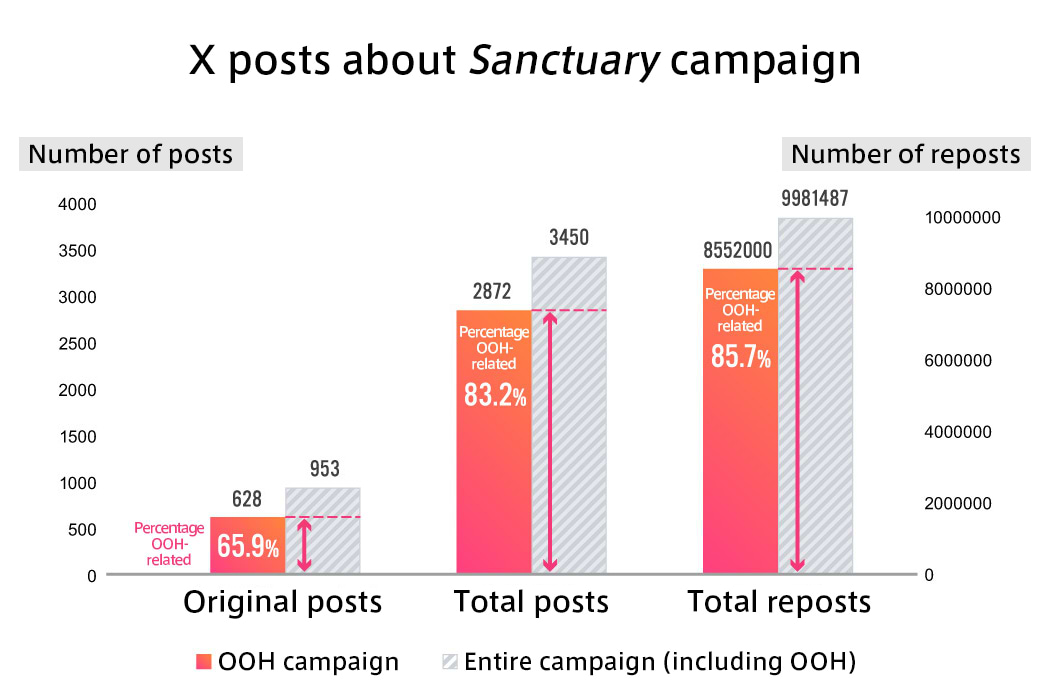
Onoe: The drama was good, so after it started airing, people went to see the installation. I have produced a wide array of advertising campaigns and, in the end, the ad slogans and visuals have proved important. In the old days, conveying what a brand was about in a concise message could only be done through newspaper ads.
But now, posts on X (formerly known as Twitter) about OOH ad campaigns provide an alternative. Personally, I believe this campaign could not have been put together without the combination of the outdoor ad installation and posts on X. OOH ads are easy to share digitally and to experience onsite, so in many cases, they can play a pivotal role in driving an ad campaign.
Daiki Kurokawa: That is a really good way of putting it. OOH campaigns can make people aware of products and services while, at the same time, make a place topical or even famous. In that way, they can be pivotal.
Onoe: OOH ads are displayed for a relatively short time so, back in the 1990s and early 2000s, they were widely regarded as ineffective for delivering substantial messages. Nowadays, however, because these ads are photographed and shared via smartphones, their impact lasts longer. That’s the main reason OOH media can play such a pivotal role. In my opinion, since a growing amount of information is being shared digitally, right from the start of an ad campaign information should be spread through OOH media to spark interest.
Misawa: I see. That’s a fresh way of looking at it. You seem to have a knack for creating and designing integrated ad campaigns that make use of digital media. Could you tell us about other OOH campaigns you have worked on that were set in specific locations?
Onoe: To promote the manga series, KochiKame: Tokyo Beat Cops, when it was released after a five-year hiatus, we displayed ads around Japan Rail’s Kameari Station. Tokyo’s Kameari district is the setting for the manga, at the front of which are illustrations of scenes from this old part of the city. We produced 12 campaign posters featuring those drawings superimposed on photographs of the actual places, with the words, “I’m back!” at the foot of each poster. We wanted to create the impression that the manga’s main character, Kankichi Ryotsu, had really returned.
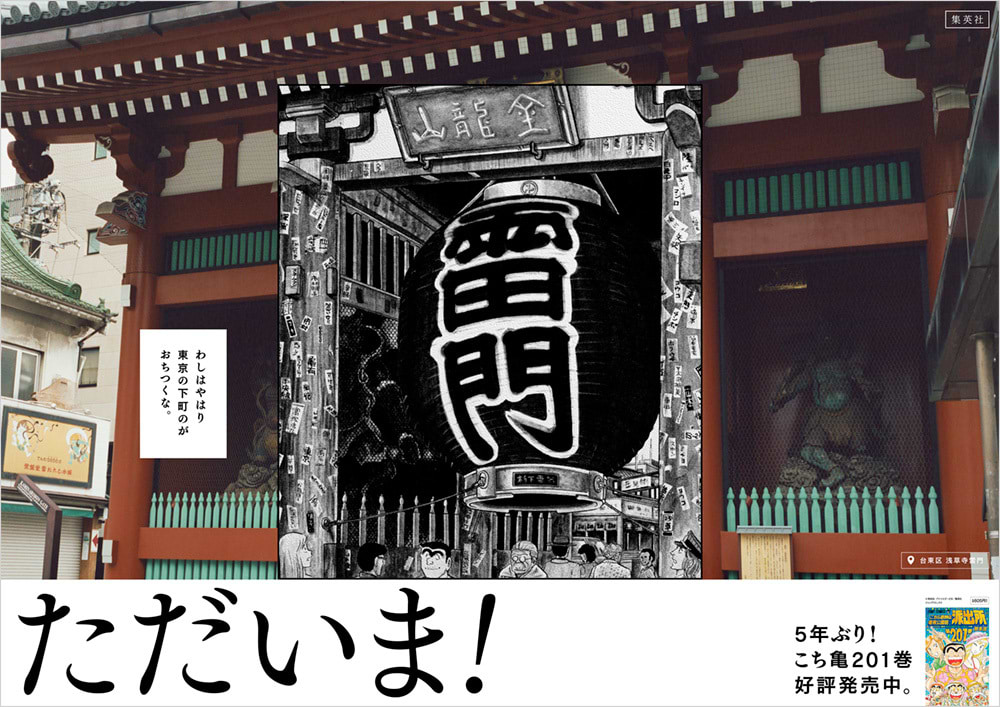
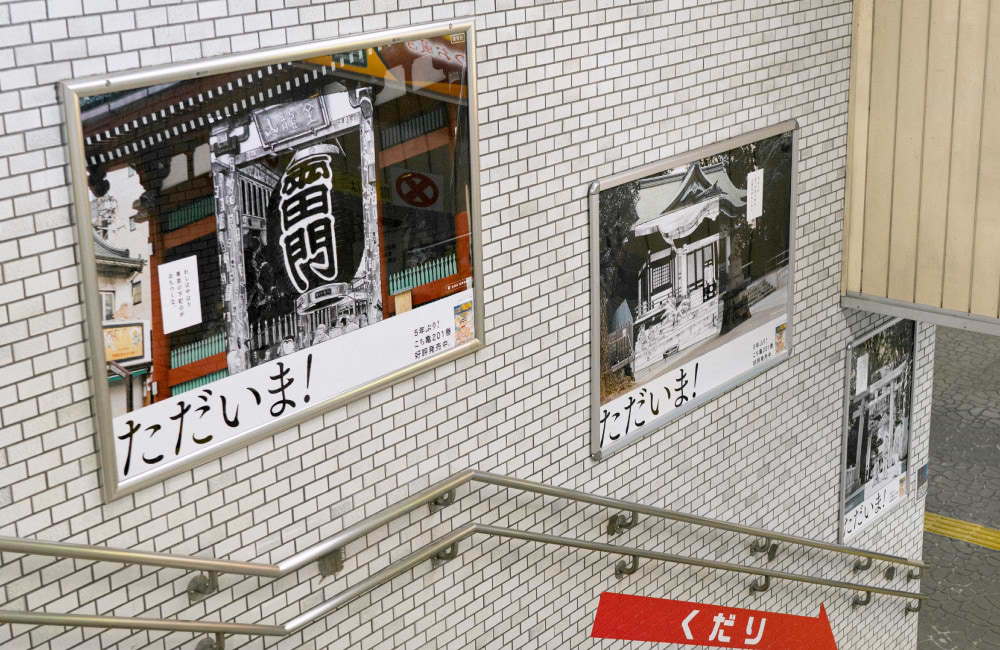
Onoe: We also produced in-train advertisements to promote Rilakkuma and Kaoru, a series exclusively shown on Netflix. It is a stop-motion animated series, and each episode is about 10 minutes long. It depicts the daily life of the main character, Kaoru, and the animals she lives with, including a bear named Rilakkuma. While Kaoru tries hard to do various things that are expected of her in life, she is able to be herself when with her pets.
For the campaign’s ad copy, we chose a variety of commonly used expressions about what people are expected to do in life. In one example, the message was, “Aren’t there too many things we have to work hard at nowadays? Forget about working hard for 10 minutes.”
At the time, it felt as though many in-train ads were putting pressure on people. Ads for diet products and services said things such as, “Let’s lose weight by summer,” while ads for English conversation schools had such messages as, “You will be left behind unless you study hard.” We thus wanted people who saw the Rilakkuma and Kaoru promotional ads to feel they didn’t have to do such things.
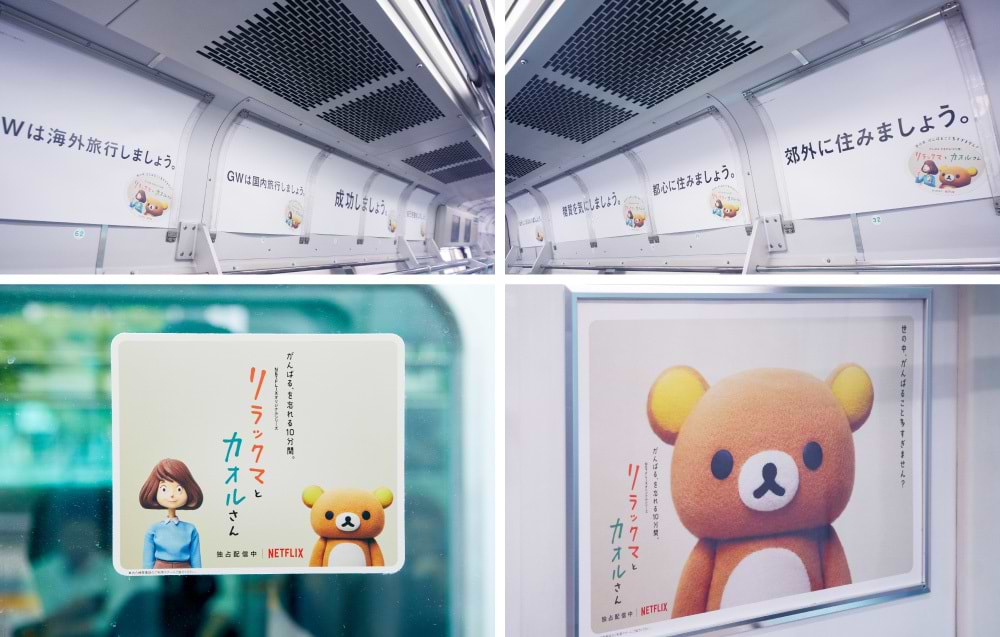
Misawa: It seems that you integrated media art in a charming advertisement while taking a critical view of common in-train ads. in your campaigns you use various advertising patterns. Why don’t you adopt the same creative approach for all your campaigns?
Onoe: It’s because I like advertisements and, as a fan, I feel rather let down when I see ads and notice that the same approach has been applied repeatedly. I find seeing a variety of approaches more satisfying.
When the same techniques and patterns are used time and again, I can’t help but assume that the product won’t sell. Once, on a street in Shibuya, I saw a huge number of ad posters featuring all kinds of different anime designs, and thought they would make anime fans really happy. I was thrilled when I saw them, and found it fun to look at all the images.
Niche OOH ads delight fans
Onoe: Fans enjoy the experience associated with products promoted by niche OOH media ads. People long remember the special places they visited, and some take photos to preserve those memories.
While outdoor ads are usually displayed in places that are easy to find and see, when fans are targeted, the more hidden and secret the places are, the more special those places become. Moreover, that can increase the effectiveness of an ad campaign, albeit it overturns the established concept of advertising.
Kurokawa: The idea that the more hidden and secret a place is, the more special it becomes is fascinating. Could you give us some examples of niche products that have been advertised in that way?
Onoe: One example is the Donbei-no-Yakan brand of instant noodles. On a train platform in Shibuya Station, there used to be a shop called Donbare-ya, where people could eat these instant noodles. When the shop closed down, we led a project to announce the closure. All we did was place on a table inside the former shop a thank-you note from the manager next to a kettle (yakan is the Japanese word for “kettle”). This could be seen through a window of the closed premises. It was certainly not a big ad campaign, but photos spread online and caused quite a buzz.
I believe that because the announcement was so low key, people felt they had discovered it, and then shared the news online with others.
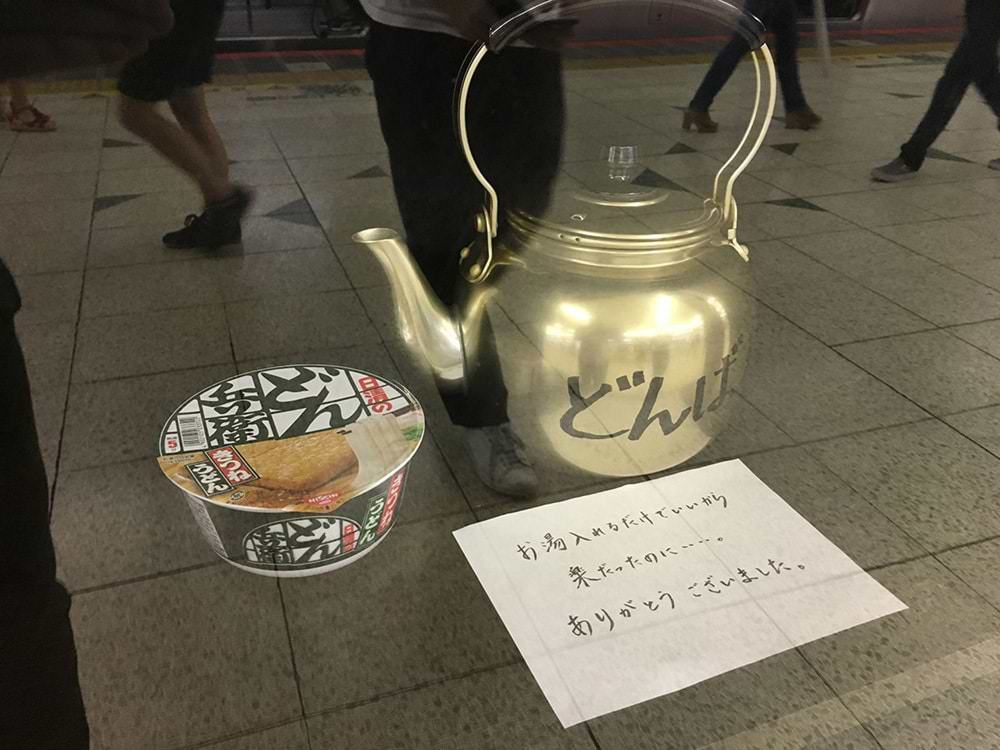
Onoe: For a campaign celebrating the 20th anniversary of the release of the manga series, One Piece, we placed ads in 10 Kyoto locations. The ads featured the straw hat the manga pirate characters wear. Some of the ads were put up in somewhat secluded spots, but that level of detail made the response to the campaign even better.
Misawa: Yes, when people discover OOH ads that are interesting, they will want to tell others about them. I can imagine people posting that on social media.
Onoe: A recent example is our OOH campaign to promote a new container for Morinaga Milk’s Mount Rainier brand of unsweetened ready-to-drink coffee. Replacing the generally used plastic cups with plastic lids, the new 330 ml screw-top paper containers make it easier for consumers to savor the coffee’s aroma. However, because the type of packaging was changed, the new product was not placed on the same store shelves as other ready-to-drink coffee products.
Since this made Mount Rainier Black harder to find, we designed the campaign to help consumers find it on the shelves. The campaign posters showed many beverages, with some appearing similar, although they are all slightly different. One needs to look closely at the product packaging to see that Mount Rainier Black has been added to the shelves. In fact, the ad copy on the poster was designed to make it fun for people to search for the product.

Misawa: Fans tend to enjoy niche OOH campaigns, but how do you announce the locations of the advertisements?
Onoe: It depends on the campaign. Sometimes we ask the client not to announce the location, because if it is announced in advance, people will go there to check it, weakening the element of discovery. In order to wait until somebody finds it, we might release the information late in the evening. It’s my hope that the first person who discovers it is a fan. When we are confident that the campaign will attract attention from the start and create a buzz, announcing the location together with the campaign launch is fine, but otherwise it might be better to announce the location later on.
OOH ads may suggest items outside one’s interests
Kurokawa: What do you think of OOH as an advertising medium? And could you tell us what you consider when planning and producing such campaigns?
Onoe: An advertising campaign limited to digital media can make a brand’s presence seem insignificant, because it only appears on a smartphone screen. A better overall balance can be achieved in the campaign by taking advantage of the larger space that OOH media occupies. That gives it a sense of presence. OOH advertising does not target specific consumers, so it has the benefit of reaching a wide range of people.
Serendipity hardly occurs in the digital realm. We tend to see only what we personally like and are interested in, such as the people we follow on social media and curation websites, as well as the YouTube channels we subscribe to. Consequently, it is easy for people to fall into echo chambers. This trend was amplified during the COVID-19 pandemic, as people increasingly interacted online rather than in the real world.
Due to these circumstances, social media operators have been changing their algorithms to generate content feeds that differ to some degree from the interests of users. Yet, OOH advertising has always done that and, as you would expect, the content is interesting. In other words, OOH advertising is similar to a recommendation engine for people moving around outdoors. It endorses appealing products and services that might be outside the scope of people’s interests.
Back in the day, Tsutaya used to post lists of the best 100 albums of all time in its pamphlets and next to the album rental shelves in its stores. I remember being interested in checking those lists and wanting to share them. In my view, if I’m keen on something, I want other people who have no interest in it to become interested. I want to have a positive influence on them.
When planning an outdoor advertising campaign, I consider how the ads can benefit the immediate surroundings. This comes from the approach of Raymond Savignac, a graphic artist I like. He thought that when commercial posters are displayed in town, they should involve things that people enjoy. When our ads are displayed, I go to the locations myself to see how they look and what kinds of people are looking at them. I notice various things and observe how people react, which is useful for my next project.
Kurokawa: You really do think about OOH advertising from many angles. Everything you have talked about is stimulating and insightful. When I explain the benefits of OOH advertising in future, I shall use the ideas you mentioned today about its pivotal role, and that it functions like a recommendation engine.
Misawa: I have learned many practical things about OOH advertising from this discussion. It is certainly clear that you respect advertising and are a fan of many products. I look forward to seeing the ad campaigns you produce in the future. I’m sure they will reflect your devotion, and effectively apply OOH media, while making our cities more interesting.
Related Link
OOH: An Outdoor Recommendation Engine (Japanese language only)
